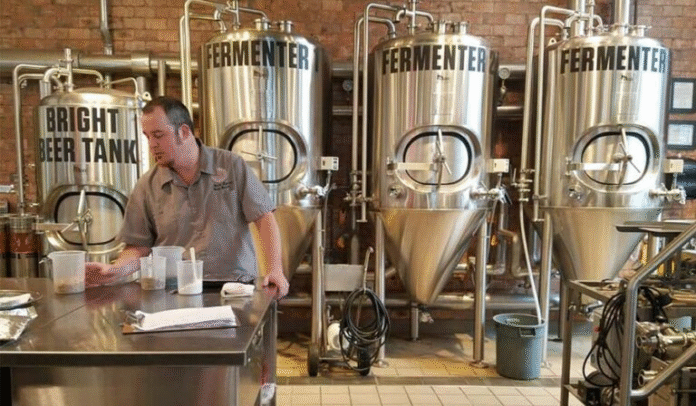Consistency is one of the hallmarks of a successful brewery. While creativity and experimentation are essential in the craft beer movement, customers expect their favorite beer to taste the same every time they order it. Achieving this requires more than great recipes and skilled brewers—it depends on how well the brewing equipment is selected, installed, and maintained.
A properly designed and set up brewhouse provides repeatable control over temperature, timing, pressure, and sanitation. From brewhouse configuration to fermentation, packaging, and cleaning, every piece of equipment plays a critical role in delivering consistent beer quality.
This article explores how to set up brewing equipment with consistency in mind, highlighting best practices, common pitfalls, and strategies to maintain repeatable results across multiple batches.
The Importance of Consistency in Brewing
Customer Expectations
Consumers returning for a favorite lager or IPA expect it to taste identical to the last pint they enjoyed. Variations in flavor, aroma, or carbonation can harm brand trust and loyalty.
Distribution and Scaling
Consistency becomes even more critical as breweries expand into distribution. Beers shipped across regions must meet the same quality standards to compete on a national or global level.
Brand Reputation
For breweries, inconsistent beer is one of the fastest ways to damage reputation. Equipment setup ensures that recipes are more than just ideas—they are executed the same way, every time.
Designing the Brewhouse for Consistency
Choosing the Right Brewhouse Size
- Nano and Microbreweries: Smaller brewhouses (1–7 bbl) allow experimentation but can struggle with scalability.
- Commercial Systems (10–50 bbl): Offer better control and repeatability.
- Large Systems (100+ bbl): Designed for industrial-scale consistency.
Breweries should select equipment that matches both current production goals and future expansion plans.
Vessel Configuration
- 2-Vessel Systems: Combine mash/lauter tun and kettle/whirlpool. Suitable for smaller breweries.
- 3-Vessel Systems: Separate mash tun, lauter tun, and kettle/whirlpool for more precise process control.
- 4-Vessel Systems: Standard for large breweries, allowing simultaneous processes and maximum consistency.
Heating Systems
- Steam Heating: Provides even, consistent heat ideal for precise temperature control.
- Direct Fire: Lower-cost option but less consistent for larger volumes.
- Electric Heating: Suited to small brewhouses and regions with renewable electricity options.
Grain Handling and Milling
Grain Storage
Consistency begins before the mash. Grain silos or storage bins must keep malt dry, cool, and pest-free. Variations in grain quality due to improper storage affect beer flavor.
Milling Equipment
A consistent crush ensures predictable mash efficiency. Adjustable roller mills let brewers fine-tune crush size, balancing extraction with lautering efficiency. Regular calibration is essential to avoid inconsistent efficiencies between batches.
Mashing and Lautering Setup
Mash Tun Considerations
- Rakes and Agitators: Maintain uniform temperature and prevent clumping.
- Insulation: Reduces heat loss for consistent mash temperatures.
- Temperature Probes: Ensure accurate monitoring throughout the mash bed.
Lauter Tun Setup
- False Bottoms: Designed for even wort separation.
- Sparging Systems: Evenly distribute hot water across the grain bed for predictable extraction.
- Flow Control: Automated valves ensure consistent runoff speeds.
Boiling and Whirlpool Setup
Boil Kettle Design
A consistent boil drives off unwanted volatiles, sterilizes wort, and ensures proper hop utilization. Features to consider:
- Internal Calandrias or Steam Jackets: Provide uniform heating.
- Automated Controls: Maintain consistent boil intensity.
Whirlpool Considerations
Whirlpools separate trub and hops from wort. Consistency here prevents haze or off-flavors. Custom whirlpool inlets and agitation systems help produce repeatable results.
Cooling and Wort Transfer
Heat Exchanger Efficiency
A plate or tubular heat exchanger must cool wort quickly and consistently. Inconsistent cooling rates can affect fermentation performance. Brewers should:
- Size heat exchangers for expected wort volumes.
- Use dual-stage cooling (with glycol and cold water).
- Clean heat exchangers regularly to maintain efficiency.
Wort Aeration
Yeast health depends on consistent oxygenation. Inline oxygen systems with flow control ensure every batch receives the same dissolved oxygen levels.
Fermentation Control
Fermenter Design
Cylindroconical fermenters are the industry standard. Features that improve consistency include:
- Cooling Jackets: Provide multiple temperature zones.
- Pressure-Rated Vessels: Enable consistent carbonation levels.
- Sample Ports: Allow repeatable quality checks.
Yeast Management
- Pitching Rates: Yeast must be pitched consistently using counting or cell density monitoring.
- Yeast Propagation Systems: Provide healthy, uniform yeast cultures.
- Harvesting and Reuse: Consistent yeast management avoids flavor drift over generations.
Conditioning and Brite Tanks
Temperature and Pressure Control
Conditioning tanks must hold beer at precise temperatures and carbonation levels. Automated controls ensure repeatable outcomes.
Sanitation and Cleanability
Sanitary welds, polished interiors, and CIP spray balls prevent contamination and maintain consistent beer quality.
Packaging Equipment Setup
Bottling and Canning Lines
Consistency extends into packaging. Modern lines include:
- Fill Level Controls: Prevent variation in bottle/can volume.
- CO₂ Purge Systems: Reduce oxygen pickup for longer shelf life.
- Automated Labelers: Maintain professional presentation.
Kegging Systems
Keg fillers must be calibrated to ensure consistent fill volumes and carbonation levels.
Utility Systems Supporting Consistency
Glycol Chilling Systems
Reliable temperature control is central to consistency. Chillers must be properly sized and equipped with redundancy to prevent fermentation swings.
Water Treatment
Water chemistry impacts every batch. Breweries often customize water treatment systems (carbon filters, RO units, softeners) to ensure consistent mineral profiles.
Steam and Electrical Systems
Stable steam pressure and reliable power supply prevent interruptions that can affect mash, boil, or cooling performance.
Cleaning and Sanitation Systems
CIP (Clean-in-Place) Systems
A well-designed CIP system ensures tanks and lines are cleaned consistently after every batch. Features include:
- Automated chemical dosing.
- Recirculation pumps.
- Spray balls for 360° cleaning.
Passivation and Maintenance
Regular passivation of stainless steel surfaces restores corrosion resistance. Scheduled inspections of welds, seals, and valves ensure long-term consistency.
Automation and Monitoring
Process Automation
Automated valves, pumps, and temperature controls minimize human error and ensure repeatability.
Data Logging
Breweries can integrate sensors and software to log temperature, pH, gravity, and pressure. Comparing batch data highlights deviations early.
Quality Control Labs
Even with excellent equipment setup, consistency requires lab testing. Labs monitor yeast health, wort composition, and final beer characteristics.
Common Mistakes in Equipment Setup
Overlooking Scalability
Installing undersized fermenters or brewhouses limits growth and forces operational inconsistencies later.
Poor Utility Planning
Inadequate glycol or steam capacity leads to unstable brewing conditions.
Ignoring Workflow
Inefficient layouts increase transfer times and raise contamination risks.
Cutting Corners on Sanitation
Poor welds, unpolished interiors, or insufficient CIP systems make consistent cleaning impossible.
Conclusion
Consistent beer quality doesn’t happen by chance—it is the result of thoughtful brewing equipment setup, precise control, and ongoing maintenance. From grain handling to packaging, every step of the process must be supported by equipment designed and installed for repeatability.
By investing in proper brewhouse configuration, fermentation control, utility systems, and sanitation practices, breweries can achieve the consistency that builds customer loyalty and brand reputation. Whether producing a flagship lager, a hop-forward IPA, or a seasonal specialty, consistency is the true measure of brewing excellence—and equipment setup is the foundation that makes it possible.
FAQs
1. What role does fermentation equipment play in beer consistency?
Fermentation tanks with proper temperature and pressure controls are essential for consistency. Even small temperature swings can change yeast performance and alter flavor profiles, so reliable fermenters and glycol systems are critical.
2. Do small craft breweries need automation to achieve consistency?
Not necessarily. Manual systems can produce consistent beer if processes are carefully monitored. However, automation reduces human error and is particularly valuable as production volumes increase.
3. How often should brewing equipment be maintained for consistency?
Routine checks should occur daily (e.g., seals, temperatures), while CIP cleaning is required after each batch. Comprehensive maintenance, including passivation, calibration, and inspection of welds, should occur on a scheduled basis—often quarterly or annually, depending on production.

